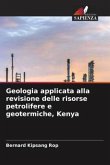A geyser is a spring characterized by intermittent discharge of water ejected turbulently and accompanied by a vapour phase. The name geyser comes from Geysir, the name of an erupting spring at Haukadalur, Iceland; that name, in turn, comes from the Icelandic verb gjósa, to gush. The formation of geysers is due to particular hydrogeological conditions, which exist in only a few places on Earth, and so they are a fairly rare phenomenon. Generally all geyser field sites are located near active volcanic areas, and the geyser effect is due to the proximity of magma. Generally, surface water works its way down to an average depth of around 2,000 metres where it meets up with hot rocks. The resultant boiling of the pressurized water results in the geyser effect of hot water and steam spraying out of the geyser's surface vent. About a thousand known geysers exist worldwide, roughly half of which are in Yellowstone National Park, United States. A geyser's eruptive activity may change or cease due to ongoing mineral deposition within the geyser plumbing, exchange of functions with nearby hot springs, earthquake influences, and human intervention.
Bitte wählen Sie Ihr Anliegen aus.
Rechnungen
Retourenschein anfordern
Bestellstatus
Storno








